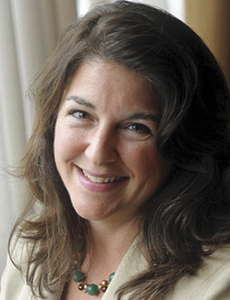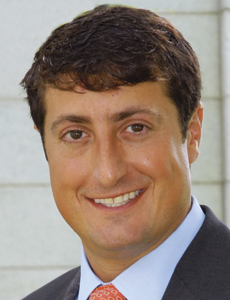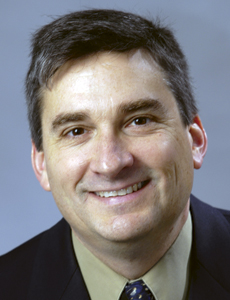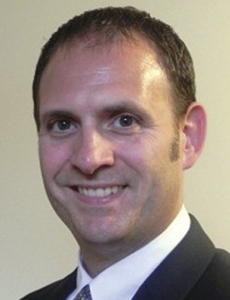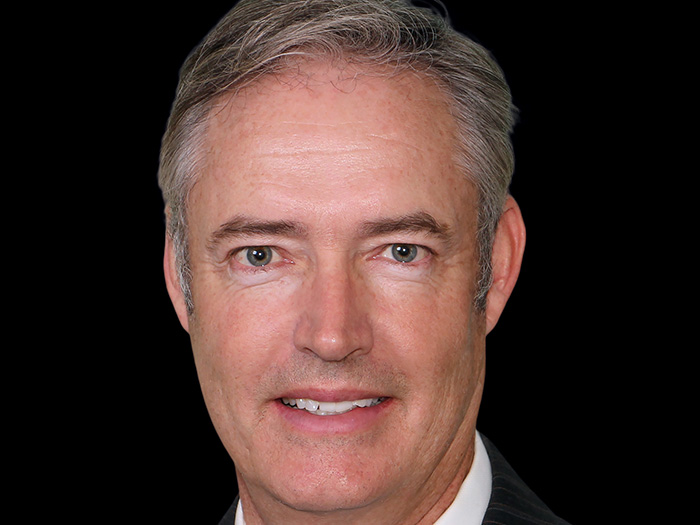Vermont Report: People to Know
Who’s Who in Montpelier

When you need someone you can trust to fix your car, sell your home, invest your life savings or buy insurance, it helps to know someone. And when you need to form a captive, it helps too.
Who should you know in the No. 1 onshore domicile? The head regulators, key economic development officials and the president of the industry association, for starters. But you don’t have to wait for an introduction. Pick up the phone and talk to them yourselves. Better still, come meet them face to face.
As you explore this important area of risk transfer, these key players in Vermont can and will answer your alternative risk transfer questions and set you on the best captive course.
David Provost
When David F. Provost took over as Deputy Commissioner of Vermont’s Captive Insurance Division in 2008, one thing he stressed again and again, during the 1,001 interviews he sat through at the time, was continuity.
“I’m just going to keep on doing what Vermont’s been doing,” he told Risk & Insurance® back then. “It’s going to be a while before it looks like it’s Dave’s Vermont.”
Six years later, no doubt it is “Dave’s Vermont,” and the domicile is still the same steady-as-she-goes, No. 1 onshore home for captives.
“We’ve changed things, but our basic approach is still the same,” Provost said in 2014.
With a quarter-century of experience in captives, first on the business side at Johnson & Higgins, Sedgwick and AIG, then on the regulatory side as an examiner and assistant chief examiner, Provost has come from within the ranks to lead them. So on top of consistency add approachability to the list of qualities that he imbues upon the department. Provost estimates that his office receives calls nearly every day about how to start a Vermont captive. His team takes the call and spends the time to walk prospective parents through the basics, pointing them in the direction of captive managers and feasibility studies.
“We don’t have an answering machine,” Provost said. “You don’t have to press any buttons when you call the phone here.”
Provost himself will field the questions, whether on the phone or in person at an industry event or in individual business meetings. He knows it’s part of the job. Even regulators must wear the marketing hat now and again.
He has his funny memories of interactions — such as the time one prospective captive owner asked how he could solve his company’s $16 billion pension problem with a captive; Provost’s response was to put $20 billion in the captive — and his memorable moments, such as when Bass Pro Shops came to Vermont, a “blast” of a formation because Provost is an angler.
There is also his pride. It shines through when he said about potential owners: “It’s an education process to tell them what some of the benefits are to companies and to society as a whole when you get into some of the niches that captives fill,” he said.
Sandy Bigglestone
Like her boss, David Provost, Sandy Bigglestone climbed nearly every rung on the ladder to reach the director of captive insurance position in 2010. In her 17 years with Vermont, she has served as director of financial examinations, chief examiner, assistant chief examiner, examiner-in-charge and insurance examiner. And like her boss, she said there is no “trigger point,” after which prospective captive owners can contact the Vermont regulators. Reach out any time.
Bigglestone and team are particularly good to contact, though, after a captive has been deemed feasible and a business plan drafted. That is when the famed Vermont face-to-face can occur.
“It establishes a relationship, to meet and shake their hands,” Bigglestone said about the first official (and mandated) meeting between prospective owners and regulators.
Such meetings are much more than just a regulatory requirement; they are beneficial to all. Bigglestone appreciates being able to learn what the parent company is all about, business-wise and value-wise. For parent companies, it’s an opportunity for risk managers and financial executives to look Bigglestone and the other regulators in the eye. It’s also a chance to appreciate the regulators as individuals, as well as see their collegial teamwork in action.
“Obviously, I have had a great run working with several excellent colleagues in the 17 years that I’ve worked for the state,” Bigglestone said of her team.
For about a dozen of those years, she’s worked with Provost. And what a combination they must be to see in action, chatting about the intricacies of the Vermont captive law, the one oft copied but never quite duplicated. Better yet, be the fly on the wall for discussions about two of their other favorite topics — craft beer and CrossFit training.
Dan Towle
As director of financial services for Vermont’s Agency of Commerce and Community Development since 1998, Dan Towle is one of the most familiar faces of the Vermont captive industry. And as perhaps the industry’s top advocate and chief marketer, he creates goodwill that’s recycled in a virtuous cycle.
“It allows us to focus on what we do best, which is regulating,” explained Bigglestone. “And the better we are at regulating, the easier Dan’s job is.”
But Dan is not just the Vermont salesman. He also can serve as shepherd. Often, interested would-be owners inquire directly to him about forming a captive.
“Very often companies do not know if what they are trying to accomplish is feasible with forming a captive and how to accomplish putting it together. They often need to be pointed in the right direction,” Towle said.
As someone who has been on staff during the licensing of more than half of the 1,000 current captives, Towle knows where to direct them. A few big-name regulators have come and gone in his day, a VCIA president or two, but Towle knows their replacements and is confident in their competency.
“I think we have continued to build upon the depth and breadth of our team in Vermont. We have never rested on our laurels,” he said. “We have a great team and we enjoy the challenges of coming up with solutions for the benefit of our captives and our industry.”
Richard Smith
Richard Smith has steered the Vermont Captive Insurance Association (VCIA) as its president since 2009. He came to advocacy for captive owners after years working in state government, most recently as deputy commissioner of the State of Vermont’s Public Service Department and policy analyst in the Office of the Governor. It’s that background in government that helped him earn the position in the first place, but it’s also perhaps that background that helps explain why he’s so comfortable working with regulators today, and directing businesses to work with regulators too.
Who are the first people a prospective captive owner should contact? Regulators, Smith said. If a business wants a “quick lay of the land,” a good first indication of whether its captive idea would fly, reach out to Provost or Bigglestone, advised Smith.
Next steps beyond that would involve commissioning a feasibility study and laying out a business plan, then returning, yes, to the regulators. This is the perfect chance for that face-to-face with the Vermont regulators.
Of course, Smith said that he and his VCIA team are available at any point in the process to brainstorm ideas, and prospects do contact VCIA at various times in the formation process, Smith said — even right off the bat. And again, who will Smith and team direct them to? The regulators.
“What makes those folks unique is their depth in their knowledge of the captive industry,” Smith said, noting how Provost and Bigglestone “came up through the trenches.”
Smith is humble in heaping praise on his fellow captive industry mates, but is also quick to stress VCIA’s role in the “three-legged stool” analogy for the industry — with the legs being formed by regulators, the knowledge base of service providers and VCIA. All three legs aim to keep Vermont on top. Smith ensures that VCIA does its part.
“For me, the biggest success that we have had as an organization is that we have provided the leadership, the education and the networking opportunity to lead the captive industry to thrive in this state,” he said.
“Rich has provided VICA with respectable leadership,” complimented Bigglestone.
Dan Petterson
Out of the five members of our who’s who, the freshest face is the current director of captive examinations, Dan Petterson. Yet, even this newest leader on the captive team has been in regulation for eight years — the first four on the traditional insurance side and the last four in his current position. Some in the Vermont industry may even know Petterson from his previous stint on the business side with accounting firm PwC.
Since joining the captive regulatory team, Petterson has been implementing a risk-focused examination system, something he had accomplished on the traditional side. He has brought the world-class Vermont team up to the same examination standards that the auditing world is headed toward. He has also continued a Vermont tradition.
“One of the other things that’s important for us is to provide a value-added examination,” he said, explaining that he and his team strive to make the exam as much a learning experience as a requirement. Exams are designed so that companies learn where they might improve. Petterson’s team takes the time to explain their comments and offer proven strategies to overcome any identified weaknesses.
“A good regulator is going to be out to find where a company is lacking. A great regulator will offer help to improve those issues,” Petterson said. “We’re basically looking to ensure the success of the industry, and that goes with every company we look at.”
He has maintained another Vermont tradition: the excellence of the exam department. Professional development for his team is critical, he said. They have 25 examiners on staff now, guaranteeing that if one examiner doesn’t have expertise in a particular topic, another examiner will.
The Bigger Who’s Who Picture
You have met five of the top, and most visible, stars of the Vermont captive industry and have gotten a sense for their professionalism, their expertise and their camaraderie. But of course the industry is far bigger than these five, and they’ll be the first to tell you. Over 30 years, Provost and two others have served as deputy commissioner, but in that span there have been six governors and countless members of the bi-annual legislature who have supported the business, he said. There have been hundreds, if not thousands, of individuals who power the regulatory departments and each and every service provider, from the accountancies and auditors to the lawyers and the captive managers.
“Every year, year in and year out, everyone supports captives here,” Provost said, “and we have a really deep bench.”
What’s the best way to meet all of these people? In person, of course.
“I often suggest that a prospect should come for a day to Vermont and meet with the state and schedule meetings with three different captive management firms. I believe it is one of the best days of free advice a prospective captive can have,” Towle said.


